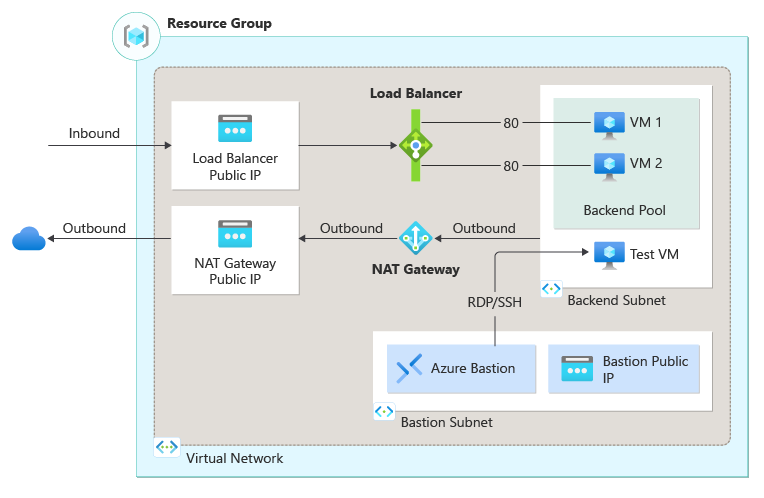Azure Load Balancer for VMs: Exploring the Benefits and Features
When it comes to optimizing the performance and availability of virtual machines (VMs) in the cloud, Azure Load Balancer is a crucial tool that helps distribute incoming network traffic across multiple VM instances. This not only enhances the scalability and fault tolerance of your applications but also ensures that your users have a seamless experience while accessing your services.
But what exactly is Azure Load Balancer, and how can it benefit your VM deployments? In this article, we will delve into the key features and advantages of using Azure Load Balancer for your VM infrastructure.
Overview of Azure Load Balancer
Azure Load Balancer operates at the Transport layer (Layer 4) of the OSI model and distributes incoming traffic based on network address translation (NAT) rules or session hashing. It can be used to load balance traffic for virtual machines, Azure Virtual Machine Scale Sets, and other services in Azure.
One of the key advantages of Azure Load Balancer is its ability to provide high availability by distributing traffic across healthy VM instances. In the event of a VM failure, the load balancer automatically redirects traffic to other available instances, thus minimizing downtime and ensuring continuous service availability.
Benefits of Using Azure Load Balancer for VMs
- Improved Scalability: Azure Load Balancer enables you to scale your applications horizontally by distributing incoming traffic across multiple VM instances. This allows you to handle increased traffic loads without affecting performance.
- Enhanced Fault Tolerance: By distributing traffic across multiple VM instances, Azure Load Balancer helps minimize the impact of individual VM failures on your services. This ensures that your applications remain available and responsive even in the face of hardware or software failures.
- Cost-Effective Load Balancing: Azure Load Balancer is a cost-effective solution for load balancing your VM deployments in Azure. It eliminates the need for additional hardware or software components, thus reducing operational costs and simplifying management.
- Flexible Traffic Distribution: With Azure Load Balancer, you have the flexibility to configure traffic distribution based on your specific requirements. Whether you need to load balance traffic based on round-robin, source IP affinity, or session persistence, Azure Load Balancer offers a range of options to suit your needs.
Key Features of Azure Load Balancer
- Backend Address Pool: You can define a set of VM instances (backend pool) that will receive and process incoming traffic. Azure Load Balancer automatically monitors the health of these instances and directs traffic only to healthy instances.
- Inbound NAT Rules: Azure Load Balancer supports inbound Network Address Translation (NAT) rules, allowing you to create port mappings for incoming traffic to specific VM instances.
- Load Balancing Rules: You can create load balancing rules to define how incoming traffic should be distributed across backend pool instances. These rules can be based on port numbers, protocols, or other criteria.
- Health Probes: Azure Load Balancer continuously monitors the health of backend pool instances by sending periodic health probes. If an instance fails the health probe, it is automatically removed from the pool to prevent traffic from being directed to it.
Overall, Azure Load Balancer is a powerful tool that helps enhance the performance, availability, and scalability of your VM deployments in Azure. By intelligently distributing incoming traffic across multiple VM instances, Azure Load Balancer ensures that your applications remain responsive and available to users at all times.
Whether you are running a small-scale application or a large-scale enterprise workload, Azure Load Balancer can help you optimize your VM infrastructure for maximum performance and reliability. So why wait? Start exploring the benefits of Azure Load Balancer for your VM deployments today!
